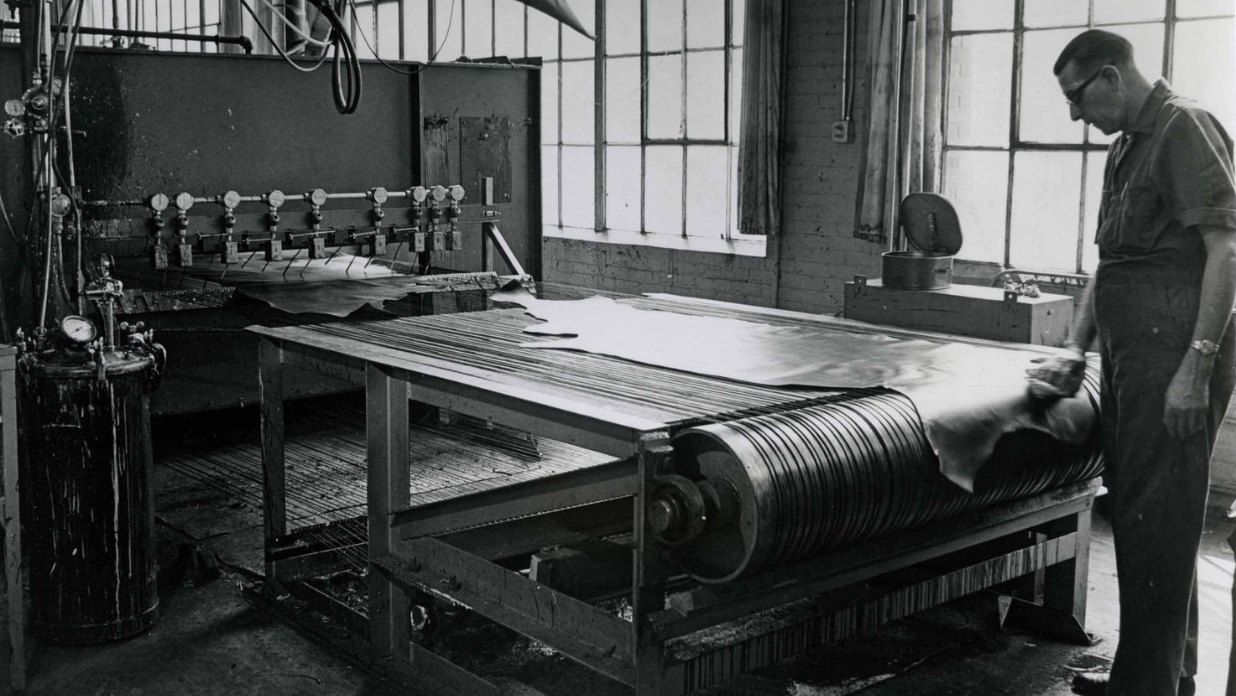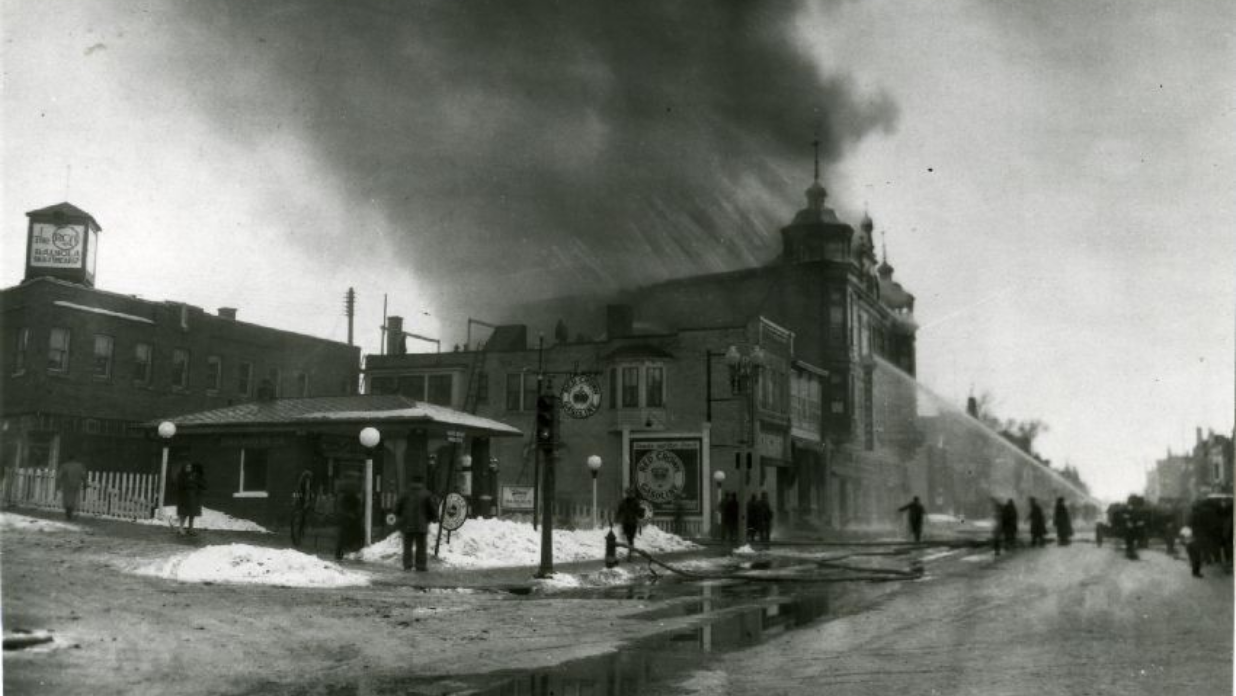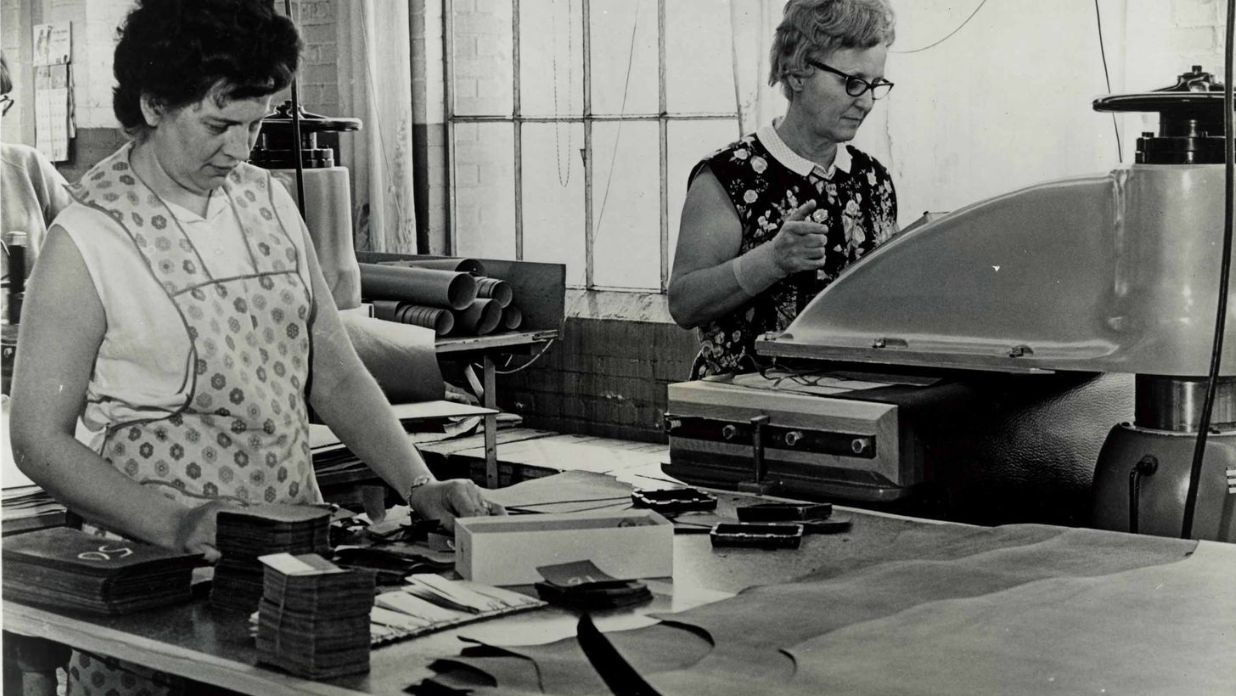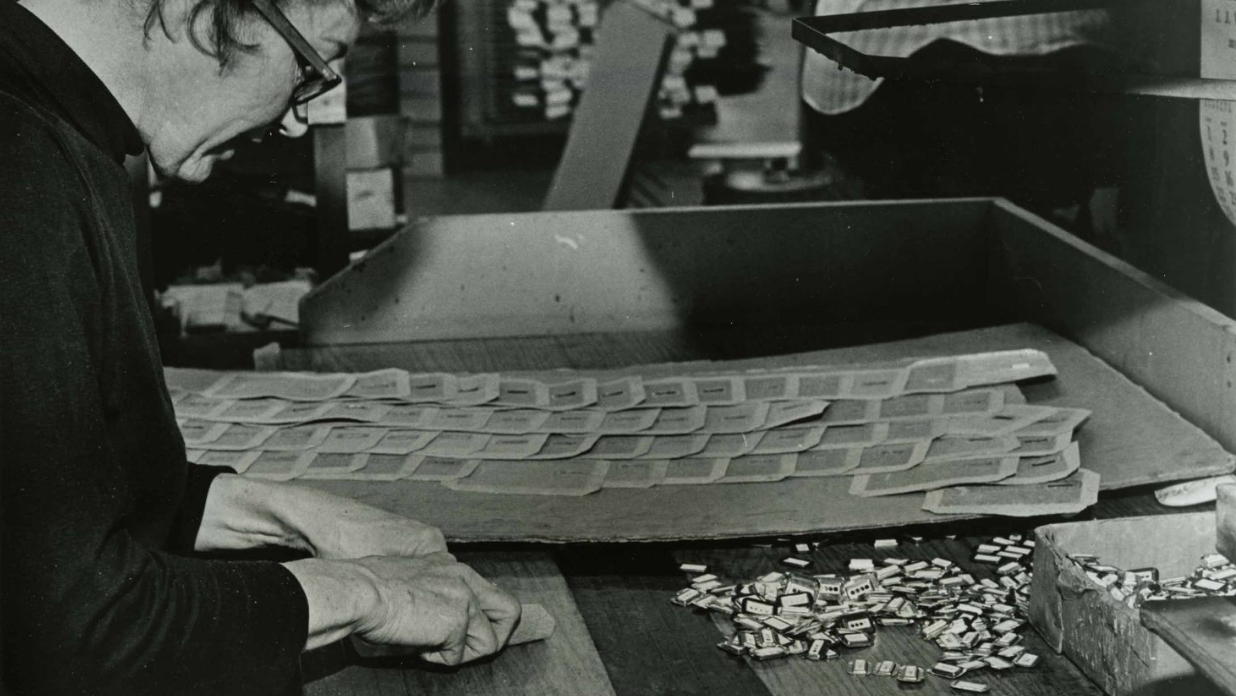Did you know?… Leather making is one of mankind’s earliest crafts. The artistry of leather in West Bend is about as old as the city itself. The Milwaukee River, winding through the town, was essential for stripping and tanning animal hides. At one point in time, West Bend even housed one of the largest personal leather goods manufacturers in the world. Its name was Amity, a fitting name for a company that never lost ties with its home city.

History of Leather Making in Washington County
At the tail end of the nineteenth century, there were three major productions of leather happening in West Bend: tanneries, harness makers, and shoemakers. Tanneries were stationed along the riverside. (The toiling process demanded a lot of water and churned out a very unpleasant smell.)
Hides – ranging from deer to buffalo – had to be dipped in lime water, soaked for months, and hand scraped and stretched to prepare them for the craftsmen.
Early leather products were primarily horse-riding accessories, including harnesses, bridles, saddles and buggy whips. It’s no wonder that when the leather car was invented, people feared leathersmiths would go extinct. The other common leather product was shoes. Shoes were so costly to make and fix that people would wear the same single pair of shoes for years.
Leather Manufacturing Begins
The first major leather manufacturer, Enger Kress, came to West Bend in 1894 after a fire took their shop in Milwaukee. They began in an old schoolhouse on 5th and Poplar, and were the first company in town to employ women. The factory quickly grew from 12 to 50 workers in its first few years. A well-preserved memory of the employees was the daily “beer break.” The entire factory was shut down for an hour-long rest period to relax and enjoy a bottle.
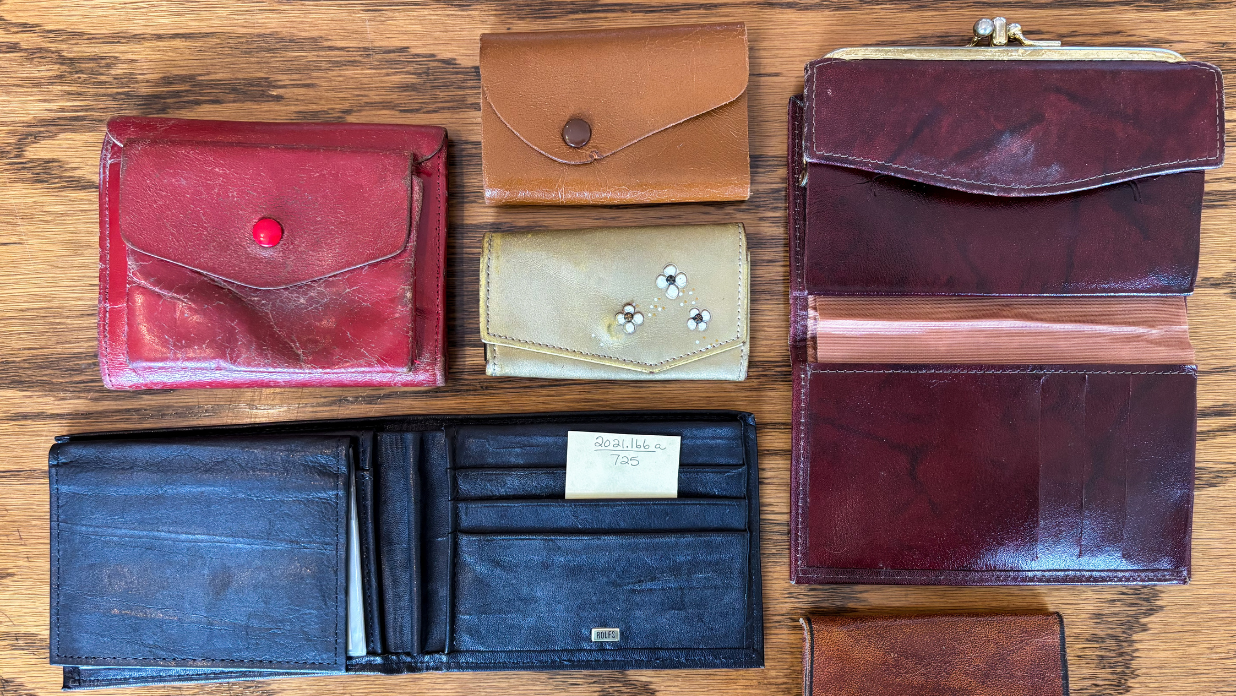
What’s a Billfold?
Against popular belief, the wallet is not a new invention. This common pocket-sized leather product has been evolving since the seventeenth century, when paper currency was invented. In West Bend’s early leathermaking days, wallets were commonly called a “billfold.”
Interestingly, the change in currency throughout history impacted the leather products that were manufactured.
Pocketbooks turned to coin purses, which preceded billfolds that turned into smaller billfolds, so on and so forth. Changing necessities in general have influenced the goods that a leather company produces. For instance, as travel preferences have shifted, train pass cases have since transitioned into leather passport holders and keychains for car keys.
Amity Leather Company’s Founding
Amity Leather Company was founded in 1915 by Robert Rolfs, a man who took the idea of making a billfold into a fashion accessory and built one of the biggest personal leather goods manufacturing businesses in history.
facing Setbacks & the iconic amity tower
Amity had occupied the third floor of the Hangartner Building until 1930, when a massive fire destroyed the company’s workspace and a majority of their products. Shortly after, Amity moved to its newly built factory featuring the Amity Tower, an iconic West Bend landmark. (Fun fact: the building is preventively constructed as a water tower in case of another future fire.)
Though the depression made money scarce, it ironically did not decrease the demand for money-holding products. In the 1930s, Amity’s infamous leather billfold and handbag sales made them the LARGEST personal leather goods manufacturer in the world.
Seven years later, Amity put out their popular Director Billfold, fabricated with a secret pocket space for spare keys. In 1938, Amity capitalized on Wisconsinites’ enamoration of the panda installation at the Brookfield Zoo, crafting a handbag made of genuine panda and selling for $5,000.00 a pop.
Sales from ladies’ handbags triggered Amity to expand its factory space into Sturgeon Bay, Wisconsin, in 1947.
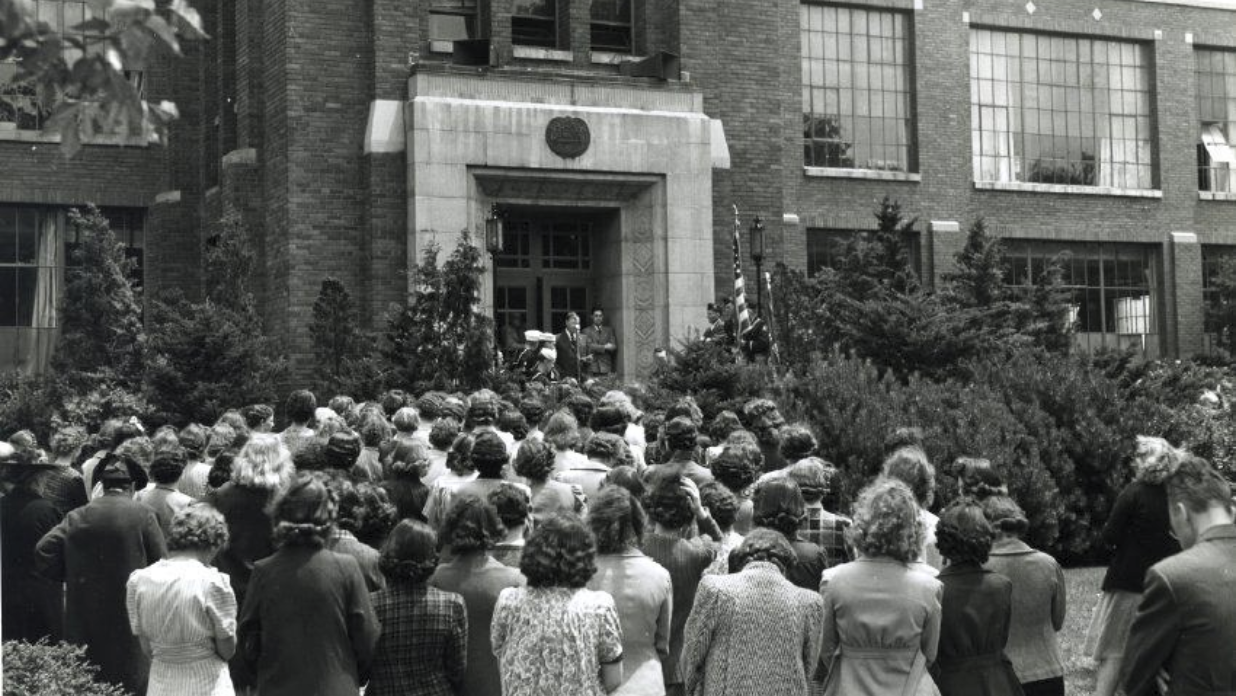
Amity also dabbled in functional leather vests, jackets and handbags for the armed forces during the World Wars. During this time, even Eleanor Roosevelt was seen accessorizing with an Amity Rolfs handbag.
Amity continued thriving through the 1950s, expanding the West Bend and Sturgeon Bay factories. In 1959, Amity built an office building adjacent to the West Bend factory. Today, the space holds the West Bend School District’s administrative building on South Main Street.
Staying True to American Craftsmanship
Founder Robert Rolfs passed away in 1965. The Rolfs family continued to lead Amity until the 1990s. Amity dominated the market for mid-price leather, but increasing product competition from Europe and Japan pushed Amity to seek out sales internationally. Exports went to countries like Turkey, Italy and the UK. In 1980, the factory building in West Bend expanded again to accommodate the sales bump.
In the late 80s, Amity was feeling pressure from other American leather companies, like Buxton and Prince Gardner, to cut manufacturing costs by fabricating their products overseas. However, Amity made the proud decision to continue manufacturing their leather in the United States and promote the quality and craftsmanship of their products rather than low prices.
“Good things Last”… but not forever
1988 was the year Amity concocted its most aggressive ad campaign ever. Full-page color ads in magazines prompted the mantra “Good Things Last” in neon lettering. Magazines featured Amity purses and wallets as fashion accessories that completed an outfit, in hopes of catching their female audience’s attention.
Since many leather items were an impulse purchase, Amity focused immensely on how their products were displayed in stores. It was Tom Rolfs, Amity Chairman at the time, who devised the idea for a vertical rotating billfold stand. This remained the standard in department stores for displaying billfolds and wallets for years.
It was the 90s that sparked consumer interest in the durable leather company as “trendy.” Amity introduced the “Micro-Bag,” which was essentially a wallet on a string. It became the newest fashion statement for women. Unfortunately, this would be the last big surge in popularity for the company.
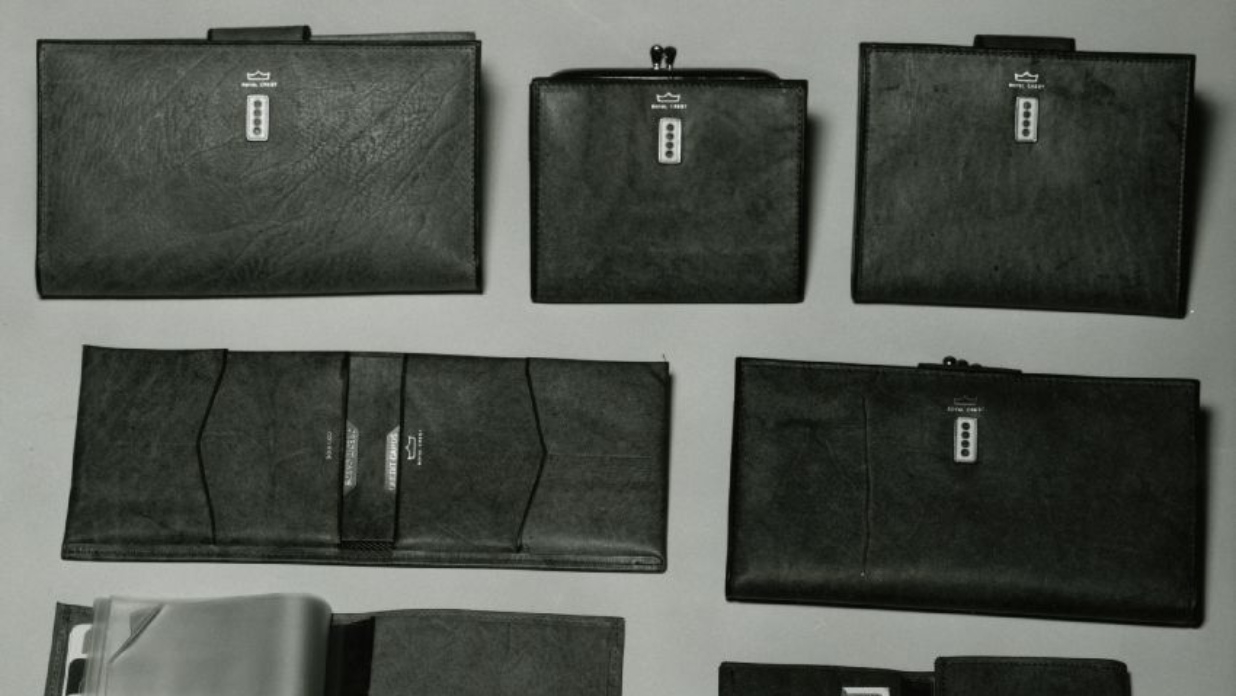
Amity Leather Company’s Final Chapter
The Rolfs family sold their shares to John Rozek and his company management group in 1992, who then changed Amity’s name to “AR Accessories Group, Inc.” They moved the company from its West Bend headquarters to Brown Deer, WI.
They sold the office space on South Main Street to the West Bend School District in ‘97. The company filed for bankruptcy later that year. Another leather company bought and retailed products out of Amity’s distribution space on Highway 33, but their operations closed down in 2007.
Legacy of the Amity Leather Company
The legacy of Amity Leather Company – and its historic impact on the leather industry – remains front of mind in the West Bend community.
In 2002, the leather manufacturing space (water tower, and all) was renovated into apartments and preserves the name “Amity Apartments” to this day. The familiar tower stands as a distinct landmark in West Bend. Even though Amity’s ownership and title had changed before the company dissolved, this building reminds us of the hard work and entrepreneurial spirit that built Washington County.
Preserving the past, for tomorrow
Community support keeps Washington County’s stories alive. Make a difference in preserving our community’s historic places and cultural heritage today, by becoming a member.
